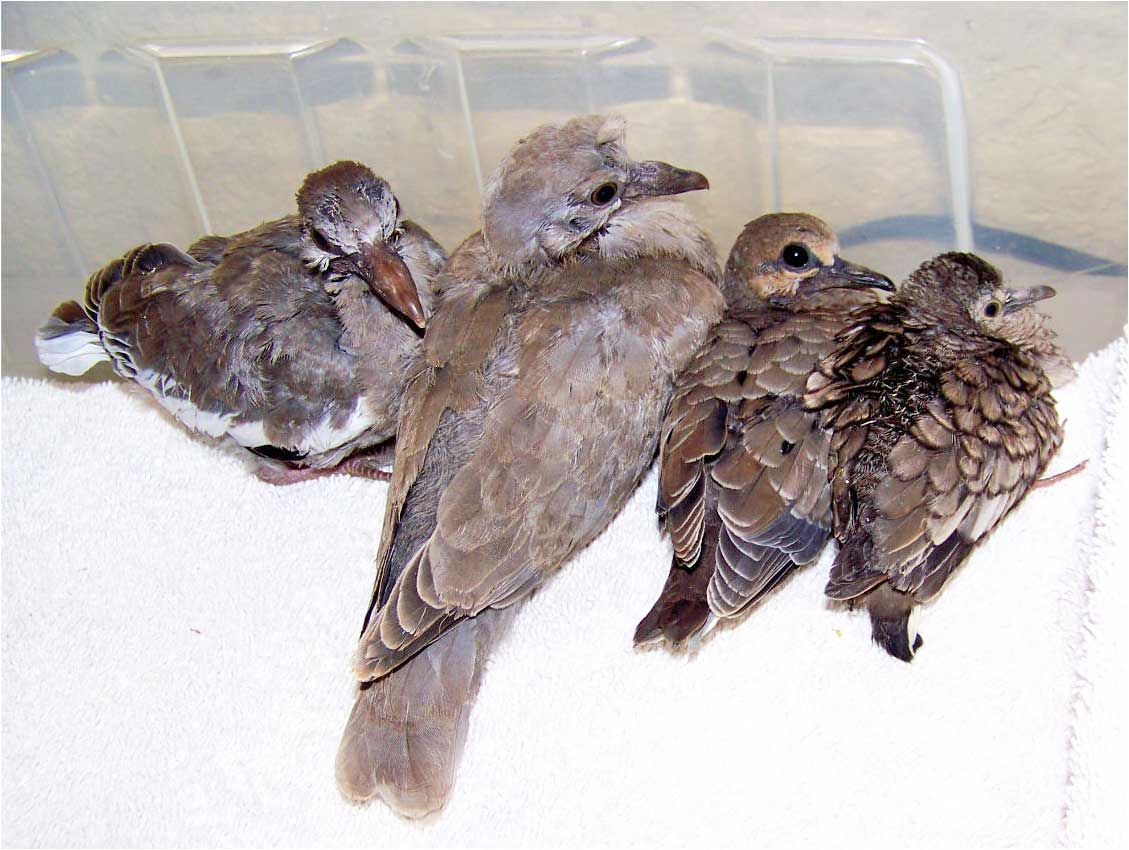
Mourning Dove Baby Care: A Comprehensive Guide
Introduction
Mourning doves (Zenaida macroura) are beloved birds known for their gentle cooing and graceful flight. As a dedicated parent, the mourning dove exhibits exceptional care for its young, providing them with nourishment, protection, and guidance. Understanding the intricacies of mourning dove baby care is crucial for bird enthusiasts, wildlife rehabilitators, and anyone who encounters these fascinating creatures. This comprehensive guide will delve into the various aspects of mourning dove baby care, from egg incubation to fledging.
Egg Incubation
Mourning doves typically lay two white eggs in a flimsy nest made of twigs and grasses. Both parents participate in incubating the eggs, taking turns to keep them warm and protected. The incubation period lasts approximately 14 days, during which time the eggs are vulnerable to predators and weather conditions.
Hatching and Nestling Care
Upon hatching, mourning dove chicks are altricial, meaning they are born helpless and dependent on their parents for survival. They are covered in sparse down feathers and have closed eyes. The parents continue to brood the chicks for warmth and protection, while also providing them with food.
Feeding
Mourning dove chicks are fed a specialized diet consisting of regurgitated "crop milk" produced by both parents. Crop milk is a nutrient-rich substance that contains proteins, fats, and carbohydrates essential for the chicks’ growth and development. The parents regurgitate crop milk directly into the chicks’ mouths.
As the chicks grow older, they begin to consume regurgitated seeds and insects. The parents continue to feed the chicks until they are approximately 14 days old, at which point they become independent and start foraging for themselves.
Nest Sanitation
Mourning doves are meticulous about keeping their nest clean. The parents regularly remove fecal sacs from the nest to prevent the accumulation of waste and the spread of disease. They also remove any dead chicks or eggs to maintain a healthy environment for the surviving young.
Protection
Mourning dove parents are fiercely protective of their young. They will defend the nest against predators, including cats, snakes, and other birds. If the nest is threatened, the parents may perform a distraction display, pretending to be injured to draw the predator away from the chicks.
Fledging
At approximately 14 days old, mourning dove chicks begin to develop their flight feathers and become increasingly active. They start to venture out of the nest for short periods, practicing their wing strength and coordination. By the time they are 21 days old, they are fully fledged and capable of flying independently.
Post-Fledging Care
Even after fledging, mourning dove parents continue to provide support and guidance to their young. They may accompany the fledglings on foraging trips and help them locate food sources. The fledglings remain dependent on their parents for food and protection for several weeks until they become fully self-sufficient.
Challenges and Considerations
Mourning dove baby care can be challenging, especially in urban environments where predators and habitat loss pose significant threats. Here are some common challenges and considerations:
- Predation: Cats, snakes, and other predators can pose a serious threat to mourning dove chicks. It is important to keep cats indoors and provide nesting boxes with secure entrances to minimize the risk of predation.
- Habitat Loss: The destruction of natural habitats, such as forests and grasslands, can reduce the availability of nesting sites and food sources for mourning doves. Providing birdhouses and planting native plants can help create a more supportive environment.
- Disease: Mourning dove chicks can be susceptible to diseases, such as avian pox and trichomonosis. Maintaining a clean nest and providing access to fresh water can help prevent the spread of disease.
- Human Interference: Human activities, such as mowing lawns and trimming trees, can inadvertently destroy mourning dove nests. It is important to be aware of the presence of nests and avoid disturbing them during the breeding season.
Conclusion
Mourning dove baby care is a complex and fascinating process that requires dedication and attention to detail. By understanding the various aspects of their care, we can help ensure the survival and well-being of these gentle and graceful birds. Whether you are a bird enthusiast, a wildlife rehabilitator, or simply an observer of nature, it is a privilege to witness the extraordinary bond between mourning dove parents and their young. By providing a supportive environment and respecting their natural behaviors, we can contribute to the conservation of this beloved species for generations to come.
